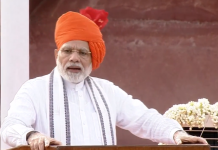Local and environmentalists suspect that the postmortem and investigation reports on recent elephant deaths released by forest minister Parimal Suklabaidya may be ‘flawed’, writes NAVA THAKURIA

Assam’s tainted forest department is in the hot-seat over what conservation enthusiasts say are suspicious elephant deaths, as 18 wild Asiatic elephants died at Bamunipahar in Nagaon locality. The department as well as the concerned minister claim the elephants died mysteriously on the night of 12 May 2021. However, locals suspect foul play and a coverup by the department that approved a massive solar project in the elephant habitat.
A recent forest department probe report into the elephant deaths was based on an assumption that the animals all died due to electrocution by a major thunderbolt. Technically qualified citizens note that this assumption is not a scientific analysis, and nature conservation groups are understandably skeptical.
The investigation report into the bulky animal’s deaths was prepared by a government formed committee and it was released by State environment & forest minister Parimal Suklabaidya at a formal press conference on 3 June in Guwahati.
Environmentalists reviewed the department’s report, declaring they found many holes in the conclusions. They insisted on an independent high level scientific probe be conducted into the incident to discover the real cause of the pachyderm’s deaths. Bamunipahar area is a known elephant habitat and animal corridor. Nature’s Beckon, an influential conservation group of northeast India, claimed that it is recognized in forest department’s own report. Its director Soumyadeep Datta seriously doubts the veracity of the report.
Lately, the biodiversity conservation group urged State chief minister Dr Himanta Biswa Sarma to initiate a proper investigation into the matter. Datta insisted that experts from the fields of Geology, Electrical Engineering, Science of Lightning, Zoological Survey of India, Wildlife Institute of India, and the Police department be included in the investigation.
While surveying the site where the elephants died, spread out across a hilltop, some people voiced their opinions that the deaths may have actually been planned intentionally.
One reason for the scepticism over the veracity of the report is that the forest department previously issued a no-objection certificate for a major solar power project in the locality.
When minister Suklabaidya visited the site, locals urged him to take the matter seriously, but he appeared to brush off their calls. In fact, from the very beginning, he asserted that all the elephants died after a massive thunderbolt hit.
The 90-page investigation report was released after repeated demands from concerned organisations and environment activists. Datta slammed the report as full of misinformation with a pile of unnecessary details added to make the document appear credible. “The investigation process only involved veterinarians directly related to the State forest department. In addition, all the tests were conducted in their own laboratories, allowing no access for independent test centers,” asserted Datta claiming that the departmental enquiry involved only two elephants for dissection.
The rest 16 animals were not forensically examined. Bhaskar J Barua, a conservationist with an engineering background, asserted that the ear-drums of the victim elephants should have been examined. Other organs sensitive to a thunderbolt impact such as the hearts of every elephant were not investigated. If all the elephants died because of electrocution by the lightning, multiple organs in every elephant would have been affected, he asserted. The department’s investigating committee mentioned that samples were collected randomly, but did not specify any carcass. Barua suspects this was an attempt to hide important evidence in the elephant deaths.
He also claimed that the report was based on assumptions with no scientific analysis as nowhere it said that lightning killed the elephants. Mentioning about a leaked histopathology report, Barua hinted that the tentative diagnosis also pointed to high voltage electrocution as the cause of their deaths. The one-page the histopathology report, signed by professor SM Tamuli, Pathology department head and A Deka, Pathology assistant professor (from College of Veterinary Science, Assam Agricultural University), came to the conclusion as a tentative diagnosis that lesions were suggestive of high voltage electrical burn injury.
The initial news of their deaths broke on 13 May through multiple media outlets. Throughout the Indian subcontinent, elephants are adored as a symbol of Lord Ganesh (also known as Ganapati and Vinayaka), the most worshipped son of Devi Parvati and Shiva Mahadev in Hindu mythology. So many devotees in the neighborhood traveled to the remote location to pay their last respects to the dead. The elephants were subsequently buried with flowers at the same location as a customary ritual.

All Assam Engineer’s Association (AAEA) described the theory of lightning causing the elephant deaths absurd. The forum of electrical, electronics, mechanical, etc engineering graduates, stated that if such an unprecedented massive thunderbolt had struck that night and killed all of the giant animals outright, then the wildlife and human populations would be in grave danger.
It argued that even if the victims were assumed to be very close to each other during the incident (to all be electrocuted at the same time), their carcasses should have been found together, but in reality it was found that their bodies were seen scattered by around 100 meters.
Most shockingly, the Bamunipahar area was already approved for a large-scale solar project by the forest department. Azure Power Forty Private Limited, a wealthy company, has received a no-objection certificate for the project. Documents show the planned solar plant will have a capacity of around 15 mega Watt in the foothills of Karbi Pahar.
The project received little coverage from local media even after hundreds of farmers in Mikir Bamuni grant village protested against the company officials. It was alleged that the company forcibly acquired the fertile land the farmers’ families had cultivated for generations for the project. The complete project covers an area of 276 bighas of land. A group of Karbi and Adivasi villagers have been fighting for their land rights and many of the protesters were even jailed by the administration.
The 400-million-dollar company claimed it bought the land from the erstwhile landlord’s (zamindar) family in August 2020. When India was facing the first wave of Covid-19 pandemic, the company also took possession of the land under police protection.
After passing through lower courts, the matter now reaches Gauhati High Court. The State’s highest court ordered status quo on the matter on 1 March last. Since then, construction work on the power plant has been stopped. The forest department may think this is the end of the matter, but the elephant tragedy would not be dismissed so easily.
tehelkaletters@gmail.com













